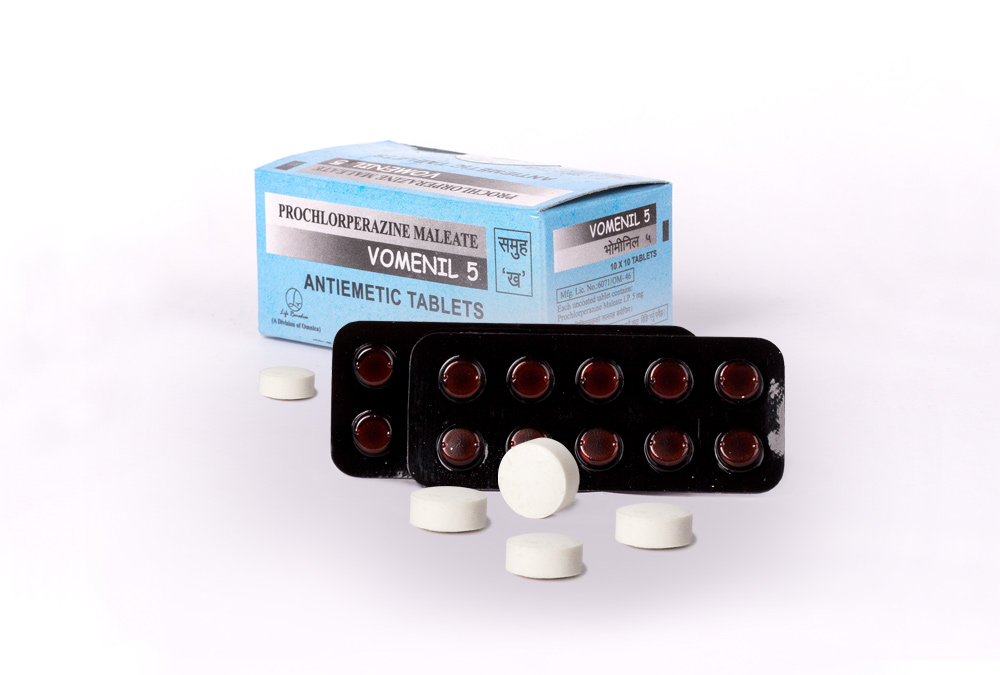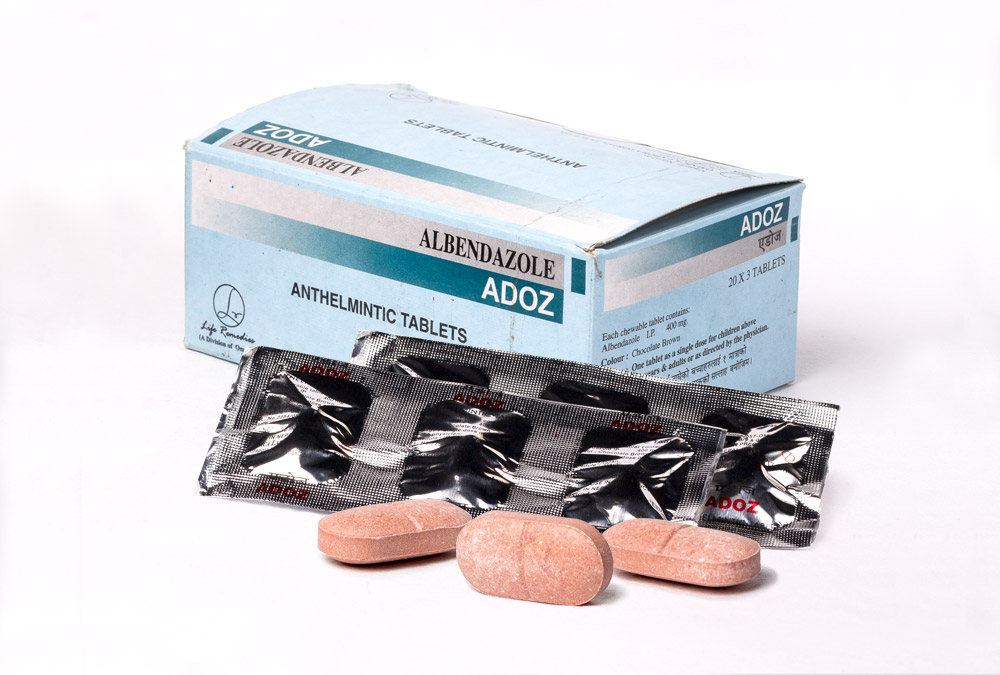Brand Name : VOMENIL
Generic Name : Prochlorperazine maleate
Preparation : 5 mg Tablet
Pharmacological Categories : Antiemetic, Antipsychotic, Antivertigo
Mechanism of Action (MOA)
VOMENIL (Prochlorperazine) shows antiemetic effect by blocking dopamine receptors in the chemoreceptor trigger zone (CTZ) of the brain and blocking vagus nerve in gastrointestinal tract.
VOMENIL shows antipsychotic effect by blocking mesolimbic dopamine receptors and blocking alpha adrenergic receptors in the brain.
Pharmacokinetics
- Absorption : Absorbed from the gastrointestinal tract
- Bioavailability : 12.5%
- Onset of Action : 30 to 40 minutes
- Metabolism : Liver, N-desmethylprochlorperazine (active metabolite)
- Elimination Half-life : 6.8 to 9 hours
- Excretion : Faeces (primarily)
Indications and Dosage
- Nausea and Vomiting :
Adult
Prevention of nausea and vomiting : One to two tablets of VOMENIL 2 or 3 times daily.
Treatment of nausea and vomiting : Four tablets of VOMENIL and further dose is given if necessary.
Children
VOMENIL is not recommended for very young children or those weighing less than 10 kg. If it is considered unavoidable to use VOMENIL for a child, the dosage is VOMENIL 0.25 mg per kg body weight given 2 or 3 times daily to children aged 1 year and above for the prevention and treatment of nausea and vomiting. - Psychoses : VOMENIL 12.5 mg twice daily for 7 days adjusted gradually to VOMENIL 75 to 100 mg according to the response; some patients may be maintained on doses of VOMENIL 25 to 50 mg daily.
- Short-term Adjunctive Management of Severe Anxiety Disorders: VOMENIL 5 to 10 mg 3 or 4 times daily
- Vertigo including that due to Meniere’s Disease : VOMENIL 15 to 30 mg in divided doses. After several weeks dosage may be reduced to VOMENIL 5 to 10 mg daily.
Side Effects
SEEN : Dry mouth, constipation, difficulty with micturation, blurred vision, mydriasis, acute dystonia, parkinsonism-like syndrome, and akathisia; late effects include tardive dyskinesia, and perioral tremor
REPORTED : Hypertension, ulceration and soreness of lip and tongue
OTHERS : Delirium, agitation, catatonic-like states, insomnia or drowsiness, nightmares, depression, miosis, EEG changes and convulsions, nasal congestion, minor abnormalities in liver function tests, inhibition of ejaculation, impotence and priapism
Contraindications
Hypersensitivity to phenothiazines, severe CNS depression, concurrent use of large amounts of CNS depressants, poorly controlled seizure disorder, subcortical brain damage, pediatric surgery, children under 2 years of age or under 9 kg weight
Warnings / Precautions
- Caution in severe hypertension, severe cardiovascular disease.
- Increased mortality in elderly patients with dementia related pyschosis.
- Avoid using in children with suspected Reye syndrome.
- Caution in glaucoma, prostatic hypertrophy, stenosing peptic ulcer disease, history of neuroleptic malignant syndrome, Parkinson disease, hypocalcemia, renal / hepatic impairment, history of severe reactions to insulin or electroconvulsive therapy, history of seizures, asthma, respiratory tract infections, myelosuppression.
- Caution in patients at risk of pneumonia due to chances of esophageal dysmotility / aspiration.
- May impair core body temperature regulation.
- May need anticholinergics antiparkinsonian agent to counter extrapyramidal symptoms.
Drug Interactions
- Symptoms of CNS depression may be enhanced by CNS depressant including alcohol, general anaesthetics, hypnotics, anxiolytics and opioids.
- Antihypertensive action of guanethidine and other adrenergic neuron blockers is reduced when prochlorperazine is used concomitantly.
- Potentiates the adverse effects of antimuscarinic agents including tricyclic antidepressants and the antimuscarinic antiparkinsonian drugs.
- Risk of arrhythmias is increased when prochlorperazine is used with drugs that prolong the QT interval including certain antipsychotics, antiarrhythmics, some non-sedating antihistamines, antimalarials, cisapride, tricyclic antidepressants and diuretics that particularly cause hypokalemia.
Pregnancy Category : C
Presentation
VOMENIL 5 mg : A box of 20 blisters, each blister of 10 tablets







